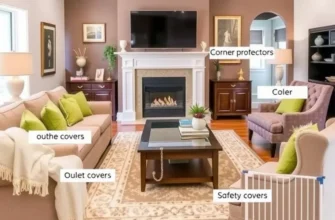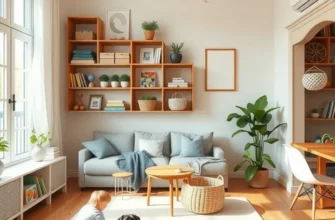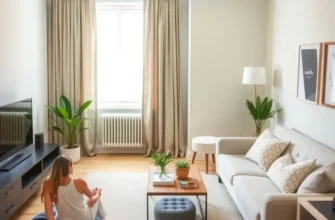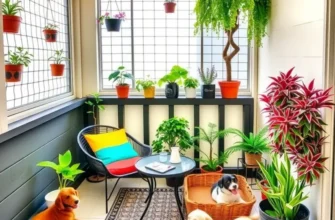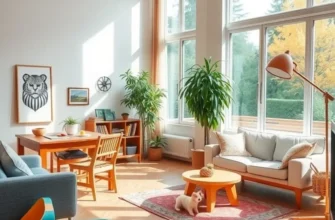Finding the ideal apartment that accommodates your furry friends and provides a safe environment for your children can often feel like a daunting task. Not only do families and pet owners need to consider space and amenities, but they must also pay close attention to air quality. Poor indoor air quality can affect everyone’s health—including pets and children, who are often more sensitive to pollutants. By understanding how to enhance air quality in pet-friendly apartments, families can feel reassured that their living space is both comfortable and safe. Whether you’re a couple looking for your first home or a family moving to a new rental, this guide will provide practical steps and tips to ensure a healthy living environment for everyone—from the two-legged to the four-legged members of your family.
Understanding the Impact of Air Quality on Pets and Kids
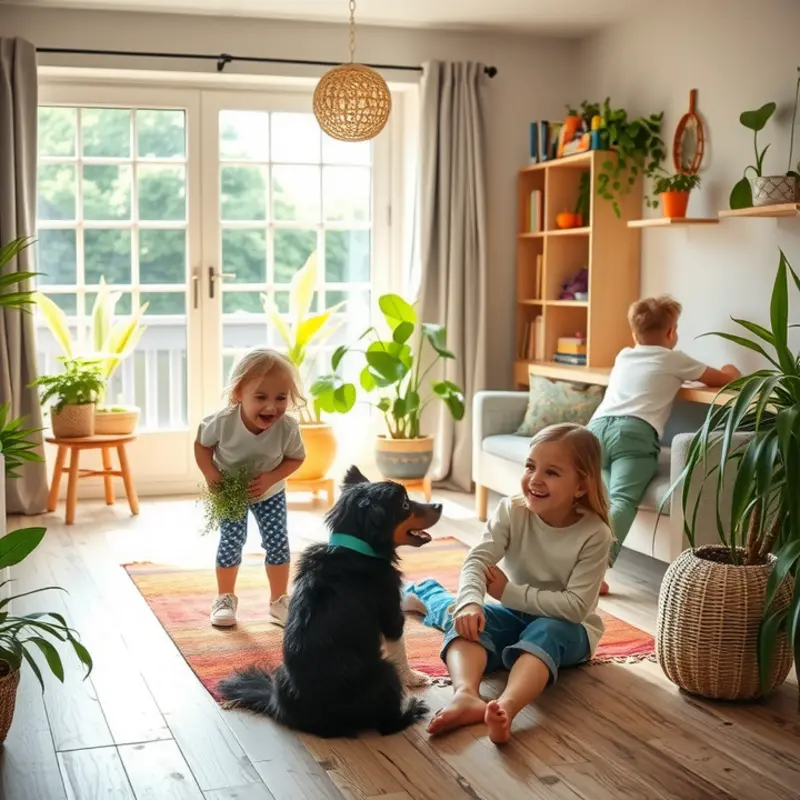
Air quality plays a crucial role in maintaining the health and well-being of both children and pets. Poor air quality can lead to respiratory issues, allergies, and other health problems. Understanding the key pollutants and ensuring effective management of indoor air quality are essential steps for creating a nurturing environment.
Children are particularly vulnerable to poor air quality due to their developing respiratory systems. Air pollutants, such as particulate matter, can penetrate deeply into the lungs, exacerbating conditions like asthma and causing other respiratory issues. Pets, depending on their size and type, may also suffer from similar respiratory distress. Certain pets, like birds, are especially sensitive to air contaminants due to their unique respiratory systems.
Several pollutants pose significant threats to indoor air quality. Particulate matter from dust, pollen, and dander is a common irritant that can aggravate allergies and cause respiratory distress. Volatile organic compounds (VOCs), often emitted from paints, cleaning supplies, and furniture, can contribute to poor air quality and have adverse health effects. Additionally, mold spores thrive in damp conditions and can cause respiratory issues if not adequately controlled.
Maintaining proper ventilation is vital to mitigating these pollutants. Natural ventilation, where feasible, helps disperse indoor air contaminants. Mechanical ventilation systems, such as exhaust fans and air conditioners with air filtration capabilities, can also aid in maintaining healthy air quality. Regularly replacing air filters and ensuring vents are not blocked supports this process.
Regular cleaning is another critical factor in improving indoor air quality. Dust, pet hair, and other particulates should be frequently vacuumed using a vacuum equipped with a HEPA filter. Hard surfaces should be wiped down with damp cloths to capture dust without recirculating it into the air. It is important to opt for cleaning products with minimal VOC emissions to avoid introducing new pollutants.
The materials used in household furnishings also impact air quality. Furniture made with sustainable materials and natural finishes often have lower VOC emissions. Opting for rugs and textiles that are less likely to harbor dust and allergens can also make a difference.
For more information on sustainable choices in furnishings, consider exploring apartment-friendly sustainability swaps to reduce environmental impact while maintaining a healthy home environment.
Creating a safe living environment for children and pets involves addressing multiple factors related to air quality. By being mindful of pollutants, ensuring adequate ventilation, and choosing household materials wisely, families can significantly reduce the risks associated with poor air quality. This foundational understanding establishes a basis for ongoing efforts to maintain a nurturing and safe space for every family member.
Practical Steps to Improve Air Quality in Your Home
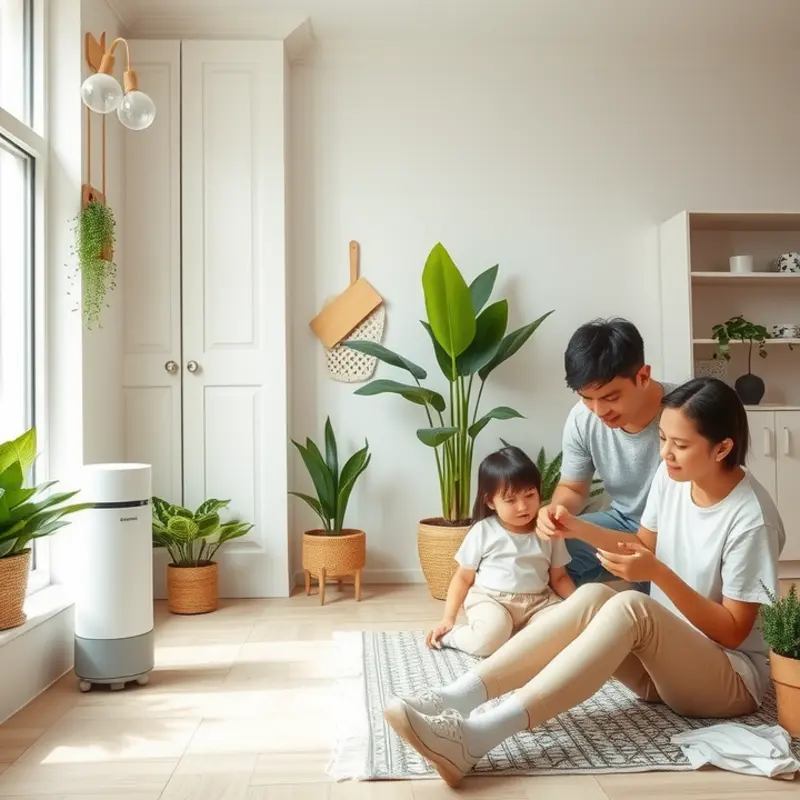
Ensuring excellent air quality in your apartment is crucial for the well-being of your entire family, including your children and pets. One effective method is utilizing air purifiers. These devices filter out particulates, allergens, and some pollutants, offering an immediate improvement in the air you breathe. Select a model that is well-suited for your space size and ensure it uses a HEPA filter, known for its efficacy in trapping small particles.
Keeping your space well-ventilated is equally important. Regularly open windows to allow fresh air to circulate. If your apartment is located in an area with high outdoor pollution levels, consider using window fans or ventilators equipped with filters to keep indoor air fresh while limiting pollutant entry.
When it comes to cleaning supplies, choosing products that are both effective and pet-friendly is essential. Avoid harsh chemicals and opt for natural solutions, which can often be just as effective without compromising air quality. Many natural cleaning agents like vinegar, baking soda, and lemon juice can handle routine cleaning tasks and even eliminate odorous compounds.
Integrating the right indoor plants can further enhance your apartment’s air quality. Plants such as spider plants, snake plants, and peace lilies are excellent choices as they help cleanse the air by absorbing toxins and releasing oxygen. Arrange them around the home in sunlight-friendly locations for optimal growth and air purification.
To further reduce allergens, establish a regular cleaning schedule that includes vacuuming with a HEPA filter-equipped vacuum cleaner. This prevents dust accumulation on floors, carpets, and furniture, a common source of allergens. Also, consider using an allergen-reducing spray on upholstery and other fabric surfaces.
Minimizing indoor pollutants also involves strategic choices, such as opting for unscented or naturally scented candles and ensuring combustion appliances are well-maintained. Consider smoking rules in your living space, as tobacco smoke is a significant pollutant.
Through these measures, you can create a healthier apartment environment that benefits everyone under your roof. For tips on making other sustainable swaps around your apartment that might contribute to a reduced carbon footprint and enhanced lifestyle, check out our apartment-friendly sustainability swaps. Ensuring a healthy home is a continuous process, but these practical steps will lead you in the right direction towards breathing easy and living well.
Final words
Creating a pet-friendly and child-safe apartment doesn’t only revolve around space and aesthetics; it significantly involves ensuring great air quality. By understanding the ways air quality impacts the health of your loved ones, and implementing simple yet effective measures to improve it, families can cultivate a comfortable and hazard-free living environment. With a little proactive care and attention, you can make your home a haven for both people and pets, enriching your shared lives together. So take the steps outlined above today, and breathe easier knowing you’re providing the best for your family.


